Socialbnb launches campaign on the role of tourism in protecting the Amazon 29 Sep 2024 4:00 AM (6 months ago)
Could you tell us a bit more about ‘SocialBnB’, the platform you co-founded? What is the difference with ‘Airbnb’?
Socialbnb is a social enterprise that creates meaningful encounters between travelers and the local population that have a long-lasting positive impact. On the socialbnb platform, travelers can book accommodations (Impact Stays), experiences (Impact Experiences), and tours (Impact Trips) that benefit local communities and the destination. Unlike Airbnb, which primarily focuses on leisure accommodations, our platform emphasizes the positive social and environmental effect travelers can have. When staying at a socialbnb, travelers directly support local communities and initiatives such as wildlife conservation, education, or gender equality. It’s a way for people to travel with purpose, knowing that their stay is contributing to a meaningful cause.
How do you ‘measure’ sustainability, and what aspects do you consider?
Since socialbnb pioneers the integration of social and ecological projects into the tourism market, we have developed a process to facilitate this. Each project has to go through a video call, assessing it based on scientifically backed quality criteria to determine if it qualifies for our platform. This approach enables us to help projects identify the best focus for creating a meaningful socialbnb experience. The criteria cover aspects like local community involvement, gender equality, ecological impact, structure of the project, and protection of vulnerable groups.
Unlike other platforms, this pre-selection ensures that every booking directly supports local conservation, education, health, or wildlife protection initiatives. Every year we publish an impact report measuring the financial benefits generated through the projects of the socialbnb platform.
For World Tourism Day, you are launching a campaign that focuses on the role of tourism in protecting the Amazon Rainforest. Could you tell us a bit more about the campaign?
World Tourism Day is a great chance to reflect on our industry’s contributions to local community development, cultural exchange, nature conservation, and its commitment to sustainability. As we heard a lot this year about the negative and destructive effects (over)tourism can have, we want to highlight some stories of what tourism can contribute as a force for good.
For that we have released our newest Impact Film that leads us to the Ecuadorian Amazon.
Every minute, 42 hectares of rainforest worldwide are lost. Faced with this reality, the indigenous Achuar have developed an innovative tourism project to protect more than 80,000 hectares in the Ecuadorian Amazon.
In our Impact Film The Call of the Forest, Achuar leader and host of a socialbnb Impact Experience, Chumpi Washikiat explores his community’s relationship with tourism and the crucial role it plays in preserving the Amazon’s biodiversity and Achuar culture.
More information can be found here.
Can you give us some practical tips on what travelers can do to protect the Amazon Forest?
When we travel to fragile ecosystems such as the Amazon, we can make a positive difference by choosing eco-friendly accommodations and tours that prioritize sustainability. Choosing local, community-based projects is key, as the revenue goes directly into the hands of those working to protect the forest. In some places these projects showed that tourism brings more long-term income than selling the wood or using the land for oil, thus keeping the forest alive.
We can also raise awareness, listen to the local people, and become a supporter of their voice to stop exploiting ecosystems such as the Amazon.
Burma Film Festival Reaches Out 4 Jun 2021 4:00 AM (3 years ago)
In response to the humanitarian and civil rights crisis in Burma (Myanmar) sparked by the military coup in February, activists and artists in the San Francisco Bay Area have banded together to organize the Burma Spring Benefit Film Festival, streaming online from June 3rd through 20th, in a curated selection of films and live talks. Profits will support grassroots humanitarian organizations working in Myanmar in support of the non-violent democracy movement. (Note: Donations are welcome but not required.) Featuring over thirty films from or about Myanmar, plus daily talks with prominent activists and observers, the Festival aims to salute “the courage and dignity of the ordinary people working nonviolently to regain control of Myanmar’s destiny.” The lineup includes documentaries, short films, and dramas, on topics ranging from human rights to the environment, from ethnic groups to Buddhism, and from LGBTQ rights to women’s issues.

The Festival was organized by a volunteer team including Kenneth Wong, a Burmese-American author, translator, and Burmese language teacher at UC Berkeley; Gaetano Kazuo Maida, executive director of the Buddhist Film Foundation; Ellen Bruno, award-winning filmmaker; Jeanne Marie Hallacy, filmmaker and director of a digital storytelling project for refugees and migrant youth; Hozan Alan Senauke, abbot of the Berkeley Zen Center; and Gregg Butensky, operations director of Kirana Productions, co-founder of Ethical Traveler, and principal at Code Refactory. Maida notes that he was “initially drawn to Burma because of its historical tradition of Buddhism and the extraordinary Bagan valley of temples,” but adds that “the burgeoning resistance to the military government over the past several years has helped make me aware of the diversity in Burma, of the many ethnic communities, religions, languages, and creative energies. The Burma Spring Benefit Film Festival embraces all of that as we try to raise awareness and support for the movement to establish a democracy there.”
Films include the brief Burma Spring 21, a collaborative work about the coup and the Civil Disobedience Movement that followed. “Watching this alongside Burma VJ,” says Wong, “about the brave video journalists who documented the uprisings that predated the digital age, might give the audience a way to contrast the different resistance movements separated by decades.” In I Am Rohingya: A Genocide in Four Acts, fourteen young refugees re-enact their families’ harrowing experiences during the genocide of Burmese Muslims; The Black Zone follows the long journey tracking a covert medical team struggling to provide aid amidst war atrocities in Burma’s jungles; and A Peaceful Land chronicles farmer resistance to a government agriculture campaign that results in widespread land confiscations and forced labor.

Speaker forums address topics including Myanmar Diaspora and the Milk Tea Alliance, Refugees and the Humanitarian Crisis, and Special Guests: National Unity Government Ministers, featuring prominent members of the National Union Government, which was formed in response to the coup. This panel, “along with Ethnic Nationalities and the Rohingya: A Search for Justice and Peace,” says Wong, are particularly relevant to the reality “that the population, having personally witnessed the military’s brutality, is growing closer to the ethnic minorities who had endured the same type of mistreatments for years in the border areas away from large cities.”
The military coup was staged early on the morning of February 1, 2021, ousting civilian leader Aung San Suu Kyi, who had won a landslide victory in the November elections. The ostensible reason for this overthrow was the claim that the election was fraudulent, despite the majority win for the democratically elected party—an increasingly familiar and terrifying allegation. “The coup abruptly ends Myanmar’s faulty and fragile push towards democracy over the last decade,” says Lee Morgenbesser, an expert on authoritarian politics in Southeast Asia at the School of Government and International Relations at Australia’s Griffith University.
Also seized that February morning were “Min Htin Ko Gyi, the founder of the annual Human Rights Human Dignity Film Festival, and President Win Myint,” Wong notes, as well as other elected civilian government leaders and activists. Subsequent arrests, he adds, include “well-known comedian Zarganar, action and romantic comedy star Min Lu, [who] is reported to be in the notorious Insein Jail, and popular male model Paing Takhon.” Additionally, prominent cultural figures have been targeted, with more than thirty poets imprisoned, some already murdered, and more than 100 professionals from the local filmmaking community in the crosshairs. Hundreds of others, famous or not, have fled into hiding. Since this brutal seizure by the junta—known as the Tatmadaw—well over 800 protestors have been killed and nearly 12,000 arrested, charged, or sentenced, according to the Assistance Association for Political Prisoners (AAPP).
By May, the swelling dissenters had galvanized into a show of force, calling for a global Spring Revolution. “Shake the world with the voice of Myanmar people’s unity,” the organizers proclaimed. Since this inception, notes Wong, “filmmakers, actors, and actresses have been on the frontline of the resistance movement. Their involvement goes beyond encouraging the protesters from the sidelines, and the price they paid for taking a stand against the military has been heavy.” But while the coup proved the catalyst for this movement, “the sociopolitical issues left unaddressed during the last decade made Burma a fertile ground for this type of upheaval.” In solidarity with these Burmese demonstrators, artists and activists in the Bay Area have joined the effort to support them and highlight the atrocities.
While the Burma Spring Benefit Film Festival promises to offer insights into and perspectives on the current political situation as well as the country’s history and culture, Wong says he hopes that, in the long run, it will demonstrate Burma to be more than a place plagued by violence, military rule, and isolation. As he explains, “It’s the country where George Orwell was inspired to write his anticolonial novel Burmese Days; where people in bright sarongs and sweat-stained T-shirts spend hours in teashops talking about books and poetry; where spirit-possessed mediums dance in delirium as they quaff down glasses of whiskey offered by the worshipers.” Looking forward, he anticipates that “in the not-so-distant future, when the military’s guns are silent and the people no longer feel the need to protest, I hope the viewers who are first introduced to Burma by the Film Festival get to experience that other Burma—the enchanting country beyond the news headlines.”
How Rural Tourism Businesses Can Survive 29 Dec 2020 9:17 AM (4 years ago)
Just about all facets of the tourism industry have suffered due to COVID-19. A look at many a website of tour operators will reveal businesses that didn’t take anyone anywhere for several months in 2020—and possibly won’t during the first few months of 2021.
However, the end of this year hasn’t represented a closed shop for several tour companies. After all, the great outdoors provides plenty of opportunities to feel at ease in socially distanced settings, as visiting remote communities does not trigger the concerns that being in crowded places may. So rural areas seemed to have fared better during the pandemic due to a general lower population density that helps reduce the spread of COVID-19.
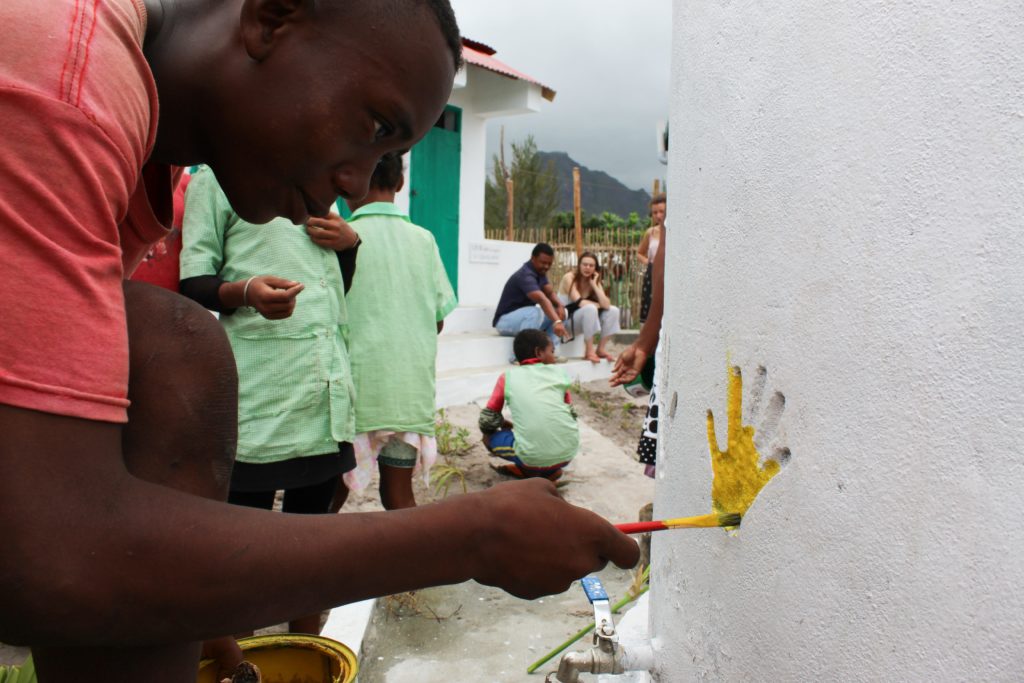
Not surprisingly, businesses specializing in excursions to rural destinations seemingly could benefit from a boom in guests—if they play their cards correct. So have such companies been able to conduct successful tours in the midst of a pandemic?
Kirsi Hyvaerinen was able to find an answer firsthand. Hyvaerinen, a member of the Board of Directors at the Global Ecotourism Network, traveled overland between August and October from Montenegro to Finland and back again, and noted that rural tourism businesses that have resumed tours share the following tendencies:
- Have well-trained and fairly treated staff that provides good, timely and reliable information.
- Give travelers the right kind of visuals and key messages (e.g. why it’s the right time to go rural and stay longer)
- Enact well-respected health and safety-protocols (that are combined with some positive creativity)
Of course, even in the best of times, tourism businesses face numerous challenges in promoting their products. So now in the midst of the pandemic, what obstacles must tourism businesses overcome? Well, many of them are out of their control.
“The biggest challenges appear perhaps more at policy level,” notes Vicky Smith, a consultant and the founder of Earth Changers, a curated collection of positive impact tourism. “In the UK, for example, the Foreign, Commonwealth & Development Office currently advises British nationals against all but essential international travel, with the exemption of some listed countries and territories.”
“This renders travel insurance null and void for destinations not on the exempt list, even if airlines were flying and Covid would otherwise be covered,” Smith adds.
Even if travelers found a destination to which they wanted immediately to hop on a plane or train, going there might not be worth the hassle. “Additionally, the ‘exempt’ list is changing at least weekly, so consumers have lost confidence on where they can and can’t go, and don’t want to be faced with a quarantine on return, unknown and unplanned for on departure: it’s too disruptive to lives and is putting further downward pressure on any bookings,” Smith states.

Furthermore, Smith believes many tourism suppliers are fearful about opening up rural areas to visitors in this COVID-19 era. “Infection rates may be highest in capitals, through which tourists travel to reach rural areas—and they don’t want the infection being brought in, especially as rural environments might not have the hospital facilities or capacity to deal with cases,” she concludes.
So what advice would tourism professionals give to businesses working to promote a rural tourism product nowadays? Smith’s answer to that question is interesting—she recommends that they devote a lot of time to improving lives locally. “Rural businesses tend to be involved in and supportive of their communities,” she notes. An example is the Grootbos Private Nature Reserve in South Africa. Through its foundation, the reserve upped its free meals program, feeding between 1,700 to 2,300 people a day (largely children unable to attend school and receive school meals). “By June 18th, that added up to 100,000 means and by July 7th, 125,502!” Smith adds.
She also provides the example of NGO Seed Madagascar, a business that welcomes tourism via way of conservation volunteers, who have also been involved in local health initiatives. “Through the pandemic, they’ve [provided] vital support to the government, purchasing thermometers for local healthcare facilities, constructing fourteen hand-washing stations, and making and distributing hundreds of masks,” Smith explains.
“The pandemic has magnified and clearly demonstrated company values and behavior,” Smith believes. “We’ve all seen companies who have behaved irresponsibly in the pandemic, which will be remembered. Those who have stepped up will equally be remembered for their help. This isn’t a cynical PR play, it’s organizations staying true to their values of supporting local people and places, which they’ve always done, and now it’s virtually understood.”
Finally, further advice about how to run a tourism business in the COVID-19 era comes from Ariane Janer, a sustainable tourism consultant who serves as the technical director of Instituto Homo Caballus, an NGO and equestrian center (as well as a business which has shut down and reopened in the midst of the pandemic):
- Make effective and not too complicated COVID-19 protocols that visitors and staff and follow. You will have to reduce the number of visitors per day.
- Screen people before they come and install a follow-up system in case someone tests positive after being at your place.
- Communicate the protocols to staff, collaborators and visitors verbally.
- Help everybody to adhere to the protocols and show that there is a not a loss in a quality of experience—but a gain in seeing the world in a different way and appreciate Mother Nature.
Like other global problems, the current pandemic won’t be solved for some time. But it hasn’t totally slowed down all forms of tourism. In fact, COVID-19 has strangely enough provided some companies an opportunity to expand their clientele. However, they must do so wisely.
Travel, Race, and the Road Ahead – A Letter from Jeff Greenwald 16 Jun 2020 10:00 AM (4 years ago)
Dear Fellow Travelers,
Ibn Battuta was a 14th century Moroccan traveler. During his lifetime he covered nearly 73,000 miles—far surpassing Marco Polo’s 7,500. “Travel leaves you speechless,” he wrote, “then turns you into a storyteller.”
Let me first acknowledge that all of us in the global travel universe—an industry that, only months ago, supported about one in 11 of the world’s citizens, from Alaska to Zimbabwe—are already facing a sense of loss, and disorientation, from the impacts of COVID-19. We are seeing our livelihoods threatened, or terminated. And we miss our explorations of this beautiful planet, and its myriad cultures. We miss sharing our stories.
Meanwhile, we find ourselves on a different kind of journey: one that may also be transformative. One of the best things about travel is that it gives us a fresh perspective on our own country—its strengths, and its challenges. We’re seeing that now—but the view is from within, not without. Through Black Lives Matter, we are focusing on a side of America that, whether viewed from home or abroad, has long been a national disgrace. Despite pronouncements to the contrary, America is not a “free” country—and will not be so until we address our legacy of slavery, mass incarceration, and glaring inequality in our social justice structures.
Part of Ethical Traveler’s credo is the conviction that we do not travel with blinders on. Travelers must be aware of our destination countries’ records—starting with social justice—and understand where our travel dollars are going. As Americans, it’s time we turn that view upon ourselves.
This has been happening elsewhere, of course. Many countries have already issued travel advisories about the United States, citing harassment, America’s high rate of firearm possession, and inequalities in our socio-economic status. Today, though, we are witnessing nothing less than a global movement. People all over the world are marching in solidarity with the countless black Americans who have been marginalized, abused, and killed by a system in which we are all complicit.
For all of us during this critical juncture in our history, educating ourselves is part of the journey. Not surprisingly, we find that racism is also deeply embedded in the worlds of travel and travel journalism. If you wish to learn more about these issues, I’d like to suggest listening to a few specific guests we have hosted on two of the Ethical Traveler podcasts.
The first is a discussion about “decolonizing travel” with Faith Adiele, founder of VONA (Voices of Our Nation’s Arts) Travel: the nation’s first workshop for travel writers of color. Her work includes Meeting Faith, her memoir about becoming Thailand’s first Black Buddhist nun; the PBS documentary My Journey Home; and Coming of Age Around the World: A Multicultural Anthology.
The second is a dialogue with Mary Ann Thomas and Christina Brobby, two adventurers of color who offer stories about their experiences as travelers and travel writers through the lens of gender, race, and sexual orientation.
Though these podcasts were recorded about two years ago, they are worth listening to today. “The real voyage of discovery,” as Proust famously said, “consists not in seeking new landscapes, but in having new eyes.” And it is with new eyes that we must navigate, from this point forward.
Thank you for reading this. May you be safe, may you be well, and may we share stories soon.
Warmly,
Jeff Greenwald, executive director
Ethical Traveler www.EthicalTraveler.org
Nepal: A Second Look 7 May 2019 2:30 PM (5 years ago)
Ethical Traveler’s list of “The World’s Ten Best Ethical Destinations for 2019” included Nepal for the first time, primarily for the progress the country has shown in areas such as LBGQT rights and animal welfare. And while the country was included to encourage even greater strides in ethical areas, Nepal still faces many serious concerns that were not fully addressed in our original report.
One troubling area is the government’s attempts to control and suppress social media. Nepal’s government recently drafted legislation that would impose harsh penalties for anyone posting content deemed “improper,” including attacks on national sovereignty, with punishments including a fine of NPR 1.5 million (USD $13,200) or five years in jail. The International Federation of Journalists (IFJ) condemned the legislation’s blatant attempt to muzzle free expression and called on Prime Minister K.P. Oli to hold immediate consultations and revise the proposed law as needed. Similarly, the Nepal Press Union (NPU) charged that by “trying to restrict the use of social networks, where the highest degree of freedom of expression is being practiced, the government is attacking democracy.” Nepali Congress leader and former information and communication minister Minendra Rijal echoed these sentiments, saying, “The bill registered by the government in the Parliament indicates that the communist government is moving towards authoritarian rule.” Even important media houses have come under scrutiny and threat. Himal Southasian, a monthly magazine, was forced to relocate its headquarters from Nepal to Sri Lanka in 2018 following threats from the government to shut it down.
Nepal has also failed to pursue justice through its Truth and Reconciliation Commission (TRC) and its Commission of Investigation on Enforced Disappeared Persons (CIEDP), founded in 2015 to investigate the forced disappearance of people during the decade-long Maoist Conflict (1996 to 2006) and to recommend reparations. When the mandate was due to expire in February 2019, neither commission had completed even one investigation into the tens of thousands of complaints filed by victims of human rights violations. Bowing to pressure from the international community and victims groups, the Nepalese government extended the commissions’ terms by one year. Given Nepal’s long history of failed commissions, however, the achievement of meaningful justice for these victims faces persistent challenges and renewed uncertainties. An even more significant challenge is the persistent culture of impunity in Nepal, and the sense that the TRC and CIEDP have been explicitly designed to ensure that powerful perpetrators of human rights violations enjoy immunity from prosecution.
Another area of concern is Nepal’s treatment of Tibetan refugees, which continues to deteriorate. This is due in large part to Nepal’s lucrative patronage from China, a country that leverages its growing financial assistance to coerce their smaller, poorer southern neighbor into toeing China’s hard line on Tibetans. The connection between economic investment and suppression of Tibetans was confirmed in the Chinese state media, with the Global Times stating that one of the reasons for China’s increasing investment was to reward Nepal for its “important role in guarding against Tibetan separatists.” Although most of the Tibetans were born in Nepal, they have no citizenship and are officially stateless; they cannot own property, and obtaining any kind of document is extremely difficult. Although the Nepali Home Ministry has worked for years on a national ID card, results that would give Tibetans rights they are currently denied are yet to be seen.
Furthermore, in 2018, the Tibetan community was again forbidden to commemorate the March anniversary of the Tibetan Uprising. This suppression of the right to free assembly and free speech has occurred in previous years, and now applies to virtually any public gathering of Tibetans—including the public display of “Free Tibet” signs, or even pictures of the Dalai Lama. And while the right of individuals to flee persecution and seek refuge in other countries is a universally accepted standard of human rights law, Nepal is not one of the 147 nations that have signed the United Nations Convention on the protection of Refugees, which guarantees refugee populations certain rights. In fact, Nepal has in the past returned Tibetan refugees to Chinese authorities, where they almost certainly face arrest and torture. More recently, Nepal has cooperated with the Chinese in making it virtually impossible for refugees to cross the border into Nepal regardless of their asylum claims, in blatant disregard for the right of non-refoulement—the obligation of States not to refoule, or return, a refugee to “the frontiers of territories where his life or freedom would be threatened on account of his race, religion, nationality, membership of a particular social group or political opinion” as stated in the 1951 Convention on the Status of Refugees.
According to the Nepalese press, a “joint action center” in Rasuwa, Nepal, has been established in order to ensure “cooperation between the two countries [China and Nepal] in border law enforcement.” There are reports of Chinese security forces operating freely on the Nepal side of the shared border, clearly speaking Chinese and making little effort to hide their presence. According to a confidential document from the American embassy in Nepal published by Wikileaks in 2010, Beijing is demanding that Kathmandu strengthen border troops. The document also states that “China rewards Nepalese forces by providing financial incentives for handing over Tibetans who want to flee across the border.”
Corruption continues to be a major problem in Nepal, even for foreign companies trying to register a business. The courts and law enforcement are plagued by corruption, exacerbated by the impunity of officials. According to Transparency International, on a scale of 0 (highly corrupt) to 100 (very clean), Nepal ranks 31.
While Nepal has made some laudable progress on the rights of women, human trafficking statistics remain alarming. Thousands of women and girls are smuggled into India every year, making trafficking one of the biggest human security issues facing Nepal. Nepal has the third highest rate of child marriage in Asia—37 percent of girls marry before 18, and 10 percent by age 15. In 2016, the government launched a national strategy to end child marriage by 2030, but action on operationalizing and implementing the plan has stalled.
Additionally, chaupadi, a practice that forces menstruating women and girls from their homes, has received significant international news coverage after a series of deaths of women and girls in menstrual sheds. Under pressure from this negative publicity, the practice was criminalized in 2017. However, overcoming such long-entrenched traditional practices is a matter of education as well as enforcement, and both have been lacking since passage of the ban on the practice.
Finally, Nepal remains one of 26 countries that denies women the equal right to confer their nationality on their children, and one of roughly 50 countries that denies women the right to pass nationality to their spouses—and to even retain their own nationality. Amendments to the Citizenship Bill to address this issue are currently being debated, but there is no indication that the rights of women will be addressed, and real change would require amending the recently enacted Constitution of Nepal to address gender inequality: a much bigger challenge.
In terms of Nepal’s tourism industry, one recent concern has been a wide-ranging scam involving helicopter pilots and tour organizers. The enterprise has corroded Nepal’s tourism industry and sucked huge sums of money from insurance companies. In this wave of fraud, trekking guides, helicopter evacuation companies, and even hospitals have encouraged unnecessary evacuations and exaggerated medical symptoms in a scheme that charges travelers thousands of dollars and has defrauded insurance companies of millions. But on this front at least progress has been made: In September 2018, Nepal authorities launched a crackdown on the offending agencies and individuals, and insurance companies are threatening to exclude Nepal from any coverage. At a time when the country is trying to boost tourism, addressing this issue forcefully and swiftly will certainly enhance Nepal’s integrity as an Ethical Destination.
We believe that Nepal is a beautiful country, with rich traditions and a warm and welcoming population. But while it is making important progress on some of its ethical issues, many significant problems still need to be addressed. We encourage travelers to visit Nepal with your eyes open, and to respectfully engage with your hosts to better understand the dilemmas of this young democracy.
The Growth of Marijuana Tourism 31 Jan 2019 12:39 AM (6 years ago)
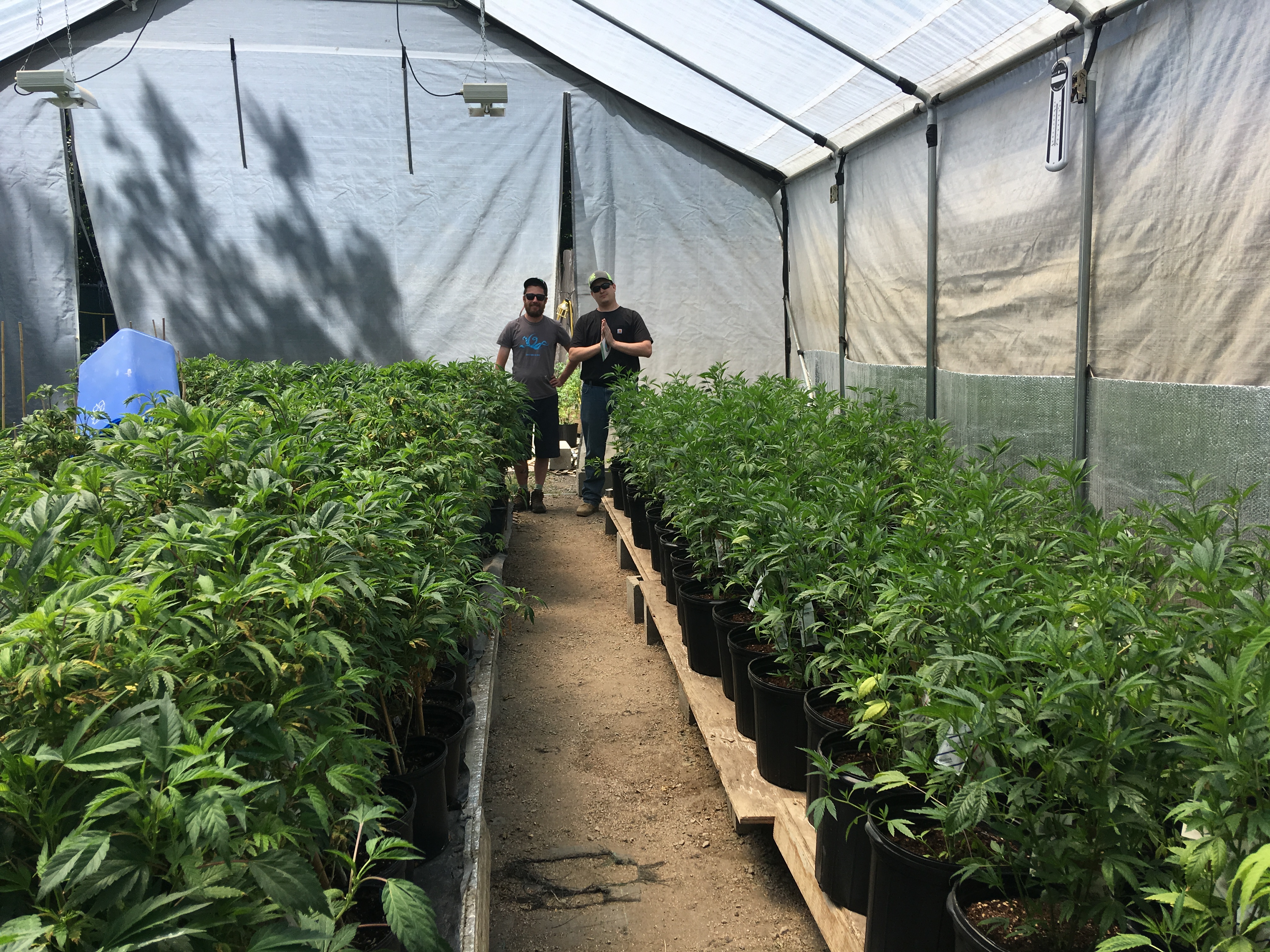
Several years ago, Matt Kurth reached a crossroads in his life. After working as a whitewater river guide for ten years, he got “tired” of it and realized he was ready to tackle another challenge. It just happened to incorporate his experiences as a tour guide, a longtime passion of his, and a budding industry.
“Guiding and showing people [places] are things I’ve been good at,” Kurth says. After becoming disillusioned with being a whitewater river guide, he recognized a major cultural shift was on the horizon. “I saw cannabis legalization coming in the future and I wasn’t the only one that saw it was going to be legal [relatively soon]. So I got the idea to combine the two.”
Inspired by his love of tourism and cannabis (the latter “has always been a big part of my life,” Kurth mentions), the Californian launched Humboldt Cannabis Tours in 2015. The company has introduced 420 enthusiasts as well as novices to cannabis producers in one of the United States’ biggest weed-growing regions (Up to 15,000 grows take place annually in Humboldt County).
Kurth is just one of many who have taken advantage of the increasingly lucrative world of cannabis – especially as its legislation is becoming more widespread in North America. According to Marijuana Business Factbook, the economic impact of legal cannabis will jump 223% from 2017 to 2022. Cannabis for recreational use is currently legal in ten states and in the District of Columbia, while in late October 2018, Mexico’s Supreme Court took steps to opening the door to legalizing recreational cannabis. Meanwhile, earlier that month, Canada became the second country in the world (following Uruguay) to legalize weed for recreational use.
Not surprisingly, cannabis tourism has emerged as big business for destinations where the drug has been legalized recreationally. “We’ve been busy in bookings and we’re being approached daily by people submitting their own tour and experience ideas,” says Matt Cronin, the CEO and co-founder of Canada High Tours, which operates visits of dispensaries in numerous cities and provides its guests opportunities to consume cannabis in legal outdoor settings.
Further south, in Colorado, cannabis tourism has risen more than 50% since 2014 and according to the most recent figures available from its Department of Revenue, the Centennial State welcomed roughly 6.5 million cannabis tourists in 2016 – evidence that legalization can spark a growth in cannabis tourism. Even in a state whose tourism department has refused to market it due to the plant being illegal federally.
“Cannabis tourism wasn’t happening in Colorado before they legalized it [in 2012],” Kurth notes. He has personally experienced the benefits of legalization in California – without it, Kurth admits he wouldn’t be as successful as his base would be limited to those permitted to use cannabis medicinally.
How to start a cannabis tour company
So what happens when you’re in a destination that has legalized cannabis and you want to launch a tour company? First, you just might have to overcome the “reefer madness stigma,” states Stacie Johnson, co-owner of Blazing Trails, a Bend, Oregon-based tour operator that informs guests about matters such as consumer safety, the state’s cannabis history and growing the plant. “The biggest challenges we face in educating people about cannabis is breaking down barriers of what is already thought and believed about [it].”
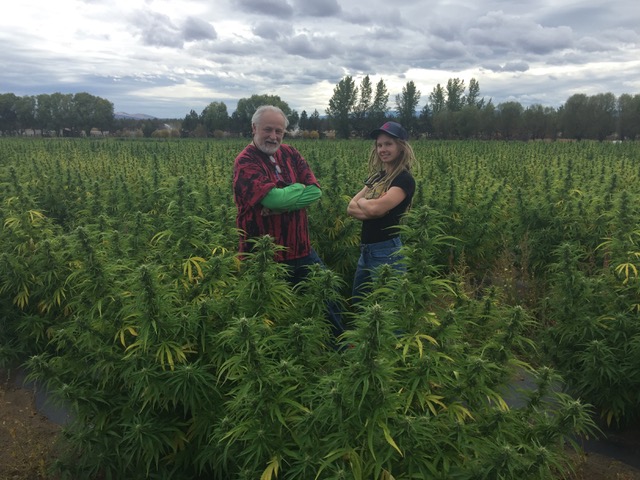
While Johnson can credit relatively recently published academic research as serving as a valuable tool in squashing fears potential guests may have about cannabis, Kurth had to spend a little more than two years working to convince a skeptical Humboldt County government to grant him a business license. That wasn’t a surprising development as he believes people tend to proceed cautiously when presented with a new concept. Kurth had pitched Humboldt Cannabis Tours as being “just like every other tour business,” but only three months after obtaining a license, he was informed that it was no longer mandated for his sort of business.
Navigating a myriad of regulations is a challenge that Canada High Tours has faced as cannabis laws differ vastly throughout the country’s jurisdictions. The company has thus decided to conduct operations in what it considers practical places. “We’ve targeted provinces and cities where outdoor cannabis consumption is aligned with cigarette smoke free laws,” says Cronin. “Otherwise, we’d rely heavily on lounges, which have their own set of challenges depending on the what city/municipality and we don’t want that.”
Is cannabis tourism sustainable and educational?
So once you get a tour company off the ground, can you make a cannabis tourism product sustainable? Kurth strongly believes so as he takes clients to “over-the-top environmentally sustainable” cannabis-producing farms.
“[The farmers] don’t use water, chemicals, plastic or gasoline,” he notes. Furthermore, by taking guests to farms, he aims to dispel the myth that cannabis needs to be grown indoors, which he views as being detrimental to the environment.
“It takes so much energy to grow weed indoors and it doesn’t even turn out that good,” adds Kurth, who strongly advocates outdoor, sungrown cannabis.
Like many other forms of tourism, a cannabis tourism product has the potential to greatly benefit a community if well executed. Kurth can attest to that.
“For every dollar I bring in [to Humboldt County],” he says. “Seven more dollars go the community. And that’s huge. It’s all pretty sustainable.”
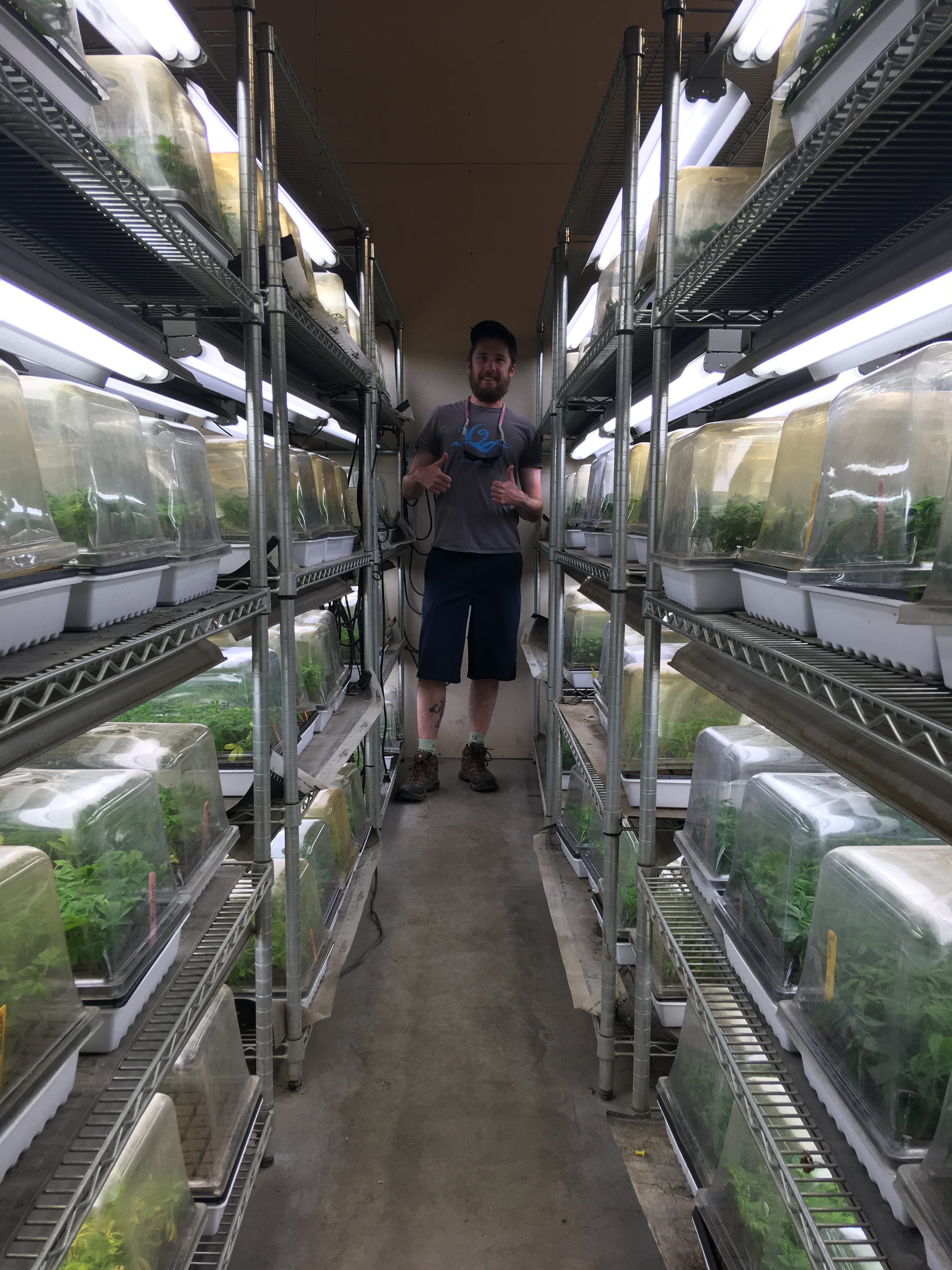
Not only has, in Kurth’s opinion, tourism been proven to be a much more sustainable industry than logging and fishing (Humboldt County has historically been a major logging area), the arrival of cannabis tourism has done wonders for his corner of Northern California.
“Legislation is not just making my business possible,” he points out. “It’s making other businesses like hotels and restaurants possible that aren’t cannabis businesses.”
But if you think all this exposure to cannabis results in a bunch of stoners, you’re mistaken. Many cannabis tour companies are barred from handing out weed to guests for legal reasons. Johnson states that Blazing Trails’ customers are prohibited by Oregon law from lighting up while on tour vehicles and in public. However, tourists can legally smoke cannabis while on private property – provided they receive permission from the property owner.
Instead, tour companies are emphasizing the educational experiences they offer participants. Gene Grozovsky, a manager of Los Angeles-based Green Tours, says his guests – who are “not 21-year-olds looking to get high,” he quickly clarifies – have greatly appreciated discovering fascinating tidbits about cannabis, such as the various uses of hemp.
“All we are is a cultural and educational tour,” he declares as his company aims to inform people about Los Angeles culture – a city Grozovsky describes as “paradise for smokers” – as well as the environment and current laws, among other things. “We take [guests] to farms to show how cannabis is grown and to the largest cannabis stores in the world,” he adds.
Another business providing guests a non-smoking cannabis experience is the Jupiter Hotel in Portland, Oregon. It offers a 420 package, which features an “Everything But the Weed Kit” that treats customers to – among other things – a vape kit, a grinder and discount coupons to local dispensaries.
“It’s absolutely been successful in attracting guests to the hotel. We sell several of them per month,” community manager Katie Watkins says about the “cannabis friendly” hotel’s best-ever selling package. “It’s a lot of fun because we feel there’s an educational piece to it as well. [Visitors] for the cannabis experience might be coming from a city or state that hasn’t legalized cannabis yet so that’s something they’re curious about.”
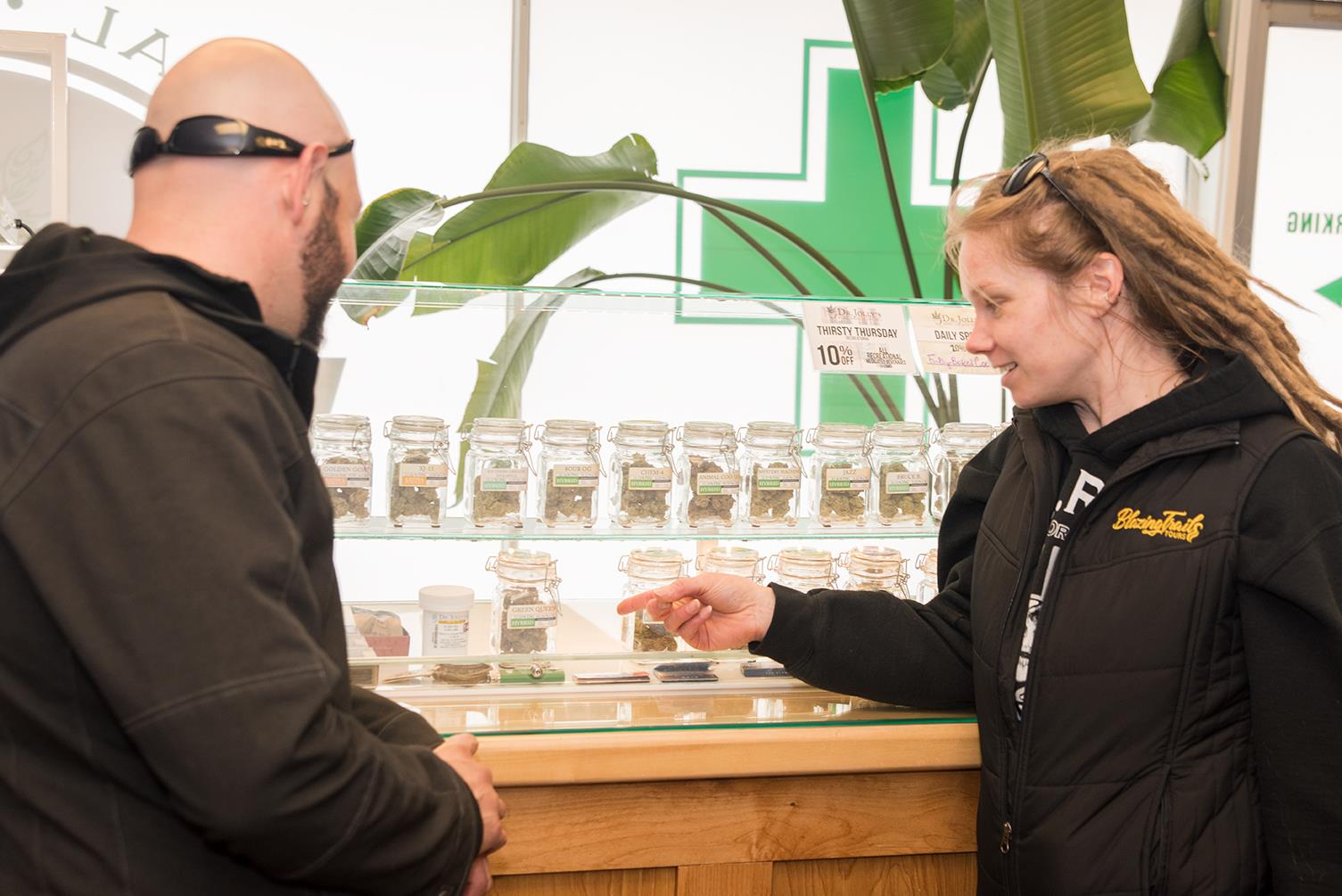
While it’s clear what the general goals of cannabis tourism are, how do tour companies determine what activities to include in an excursion? One step involves incorporating the opinions of prospective guests, an action Johnson takes. That can be challenging because tours can assume different shapes due to customers often having divergent desires – something she notes as she’s frequently had to change planned tour itineraries.
“When a booking comes in, we’ve asked a few basic questions about interests and what people are hoping to learn on our tour. Then, we design the tour with this in mind,” Johnson explains.
Meanwhile, Matt Cronin puts himself in the shoes of cannabis novices when considering what activities to include in a tour. “Anything we feel appeals to the first-time cannabis curious person and the experienced user,” he responds when asked how Canada High Tours decides which activities to select. “We offer tours to dispensaries for the first time nervous customer who has never been to a dispensary before or purchased cannabis. We are there to help and guide [guests] with that first purchasing decision.”
What does the future hold for cannabis tour companies?
Tourism multiplier effects Kurth mentioned would seemingly lead destination marketing organizations (DMOs) and executives in other fields to embrace cannabis tourism. And some of them have: Johnson estimates that 50% of Blazing Trails’ business is directed from the Visit Bend website. The company has received support in Bend’s business community – Blazing Trails produces a segment on cannabis education for a local corporate radio station.
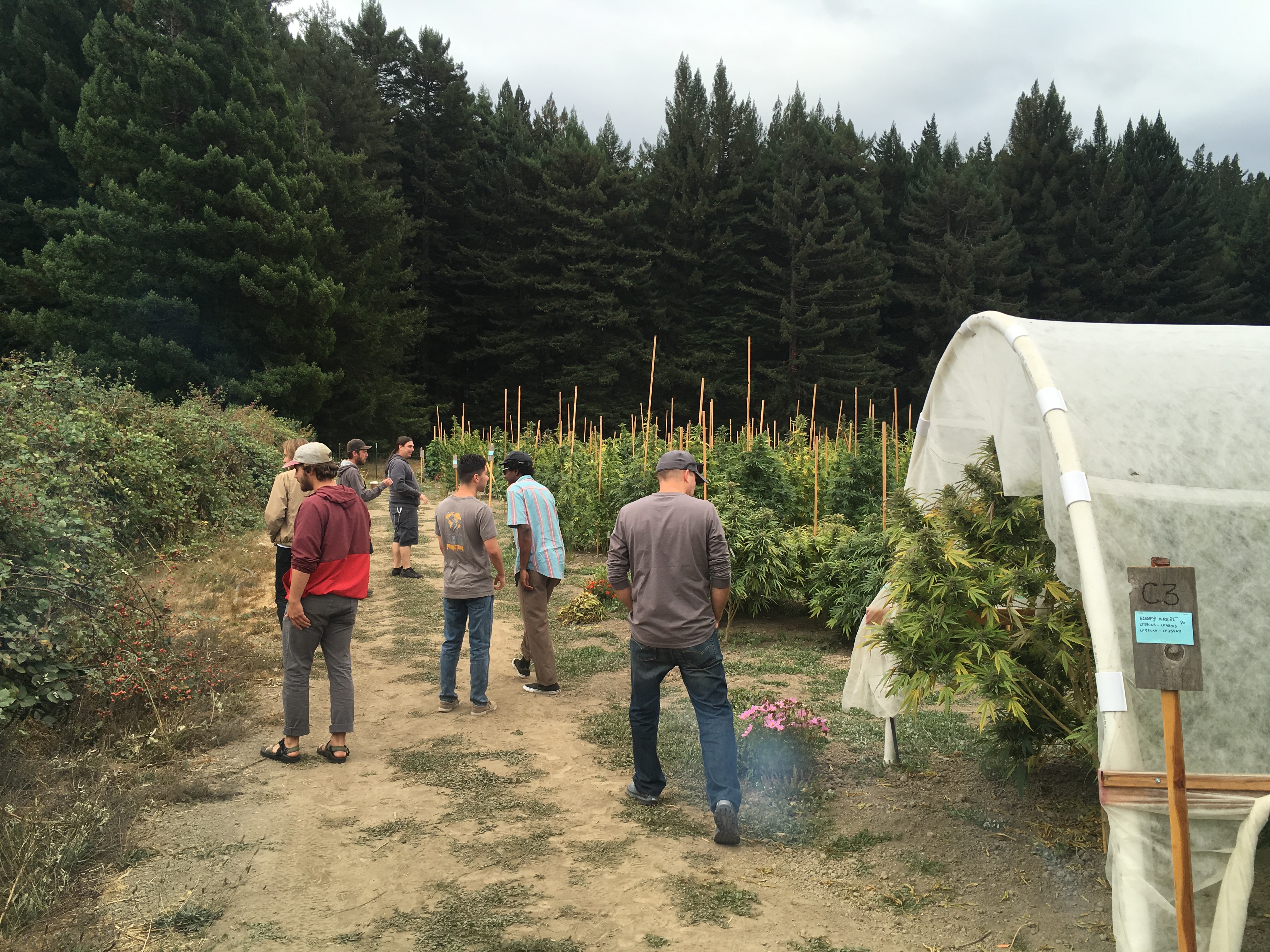
However, unsurprisingly, some tour companies have experienced pushback because as Kurth puts it, “there will always be people opposed to cannabis.” In addition to being delayed in obtaining a business license, Humboldt County Tours encountered a hostile local visitors bureau who was “quite opposed to [promoting cannabis tourism].” Meanwhile up north, Johnson reveals some of her efforts to promote Blazing Trails have been rebuffed.
Fortunately, for Kurth, his local visitors bureau has since done a 180 and now wants to promote cannabis tourism. Kurth also credits the “sophistication” of the area’s cannabis industry, which includes a Humboldt County Cannabis Chamber of Commerce (a consortium of local weed businesses), as well as the invaluable support from other members of his community for the success of Humboldt County Tours.
Once visitors start coming, cannabis tours tend to feature a diverse set of guests. Green Tours, which Grozovsky says was the first cannabis tour business to be featured in TripAdvisor, largely attracts a demographic of well-educated 30-75 year olds that includes doctors and lawyers. Blazing Trails also boasts a varied clientele. According to Johnson, tourists from two-thirds of U.S. states and numerous countries (such as Canada, the U.K., Germany and Singapore) have explored the world of cannabis in Central Oregon. “We see people from all walks of life,” she notes.
And the industry shows no signs of slowing down. In fact, cannabis tourism could be set for an even bigger boom if a Grozovsky prediction holds true: He firmly believes it’s inevitable that cannabis will be legalized on a federal level in the United States soon largely because the government has to acquiesce to the states’ wishes.
“In 1934, when there were 37 states that had alcohol consumption [laws] on the books, the federal government had to react and do something about it,” he states. “Currently, we’re at 33 states (including those who have legalized weed for medicinal purposes) that have cannabis laws on the books. When you have 40 states out of 50 that have legalized cannabis (legalization is poised to happen in several more states in the near future), the federal government has no choice but to legalize cannabis.”
High times indeed for cannabis tourism.
Naked Tourism 31 Oct 2018 1:36 AM (6 years ago)
When Shirley Mason was a young girl, she participated in an activity one summer that ended up being a life-altering experience.
“They would do special things during this two-week long summer camp and they kept talking about this one special thing we were gonna do,” she says.
It was something she has ended up doing relatively often: skinny dipping.
But as enjoyable as that experience was, Mason quickly realized such episodes would be few and far between. At the time, she was living way up in the northern U.S. – Minnesota, to be exact. “Every summer, there were only a few days of the year where I could go down to this area called Park Point and get in the water,” she recalls. “It used to drive me crazy because I love the water. But I love warm water.”
“So from the time I was a young girl, I was attracted to Florida.”
So the Sunshine State was the place where Mason established herself in the tourism industry as the executive director of B.E.A.C.H.E.S. (Beach Education Advocates for Culture, Health, Environment & Safety) Foundation and the brains behind the clothing-optional section of Miami-Dade County’s Haulover Beach, which is widely acclaimed as one of the world’s best nude beaches.
It’s only fitting that a top nude beach – well, in the eyes of CNN, the Travel Channel, and Forbes (among others) – is in Florida. After all, the nude and clothing-optional travel industry is thriving in the Sunshine State. According to a joint study conducted by the American Association for Nude Recreation and American Association for Nude Travel Florida, 2.2 million visitors to 34 nudist resorts in 2016 resulted in a $7.4 economic impact in the state. Mason says the 1.3 million annual visitors to Haulover Beach alone inject $1.4 billion into the local economy.
Mooning at Machu Picchu
However, the red carpet hasn’t exactly been rolled out for naked travelers in some other locations. In recent years, numerous tourists have been arrested for posing in their birthday suits at Machu Picchu. In 2015, no fewer than ten visitors were removed from the premises for stripping down – even after Peruvian authorities increased surveillance to counter the trend. In 2018, folks are still disrobing at Machu Picchu. Three visitors were expelled in March after baring their buttocks for photos in front of the Incan ruins.
Peru’s iconic landmark isn’t the only site that has to to deal with unruly half-dressed (or more) guests. Also in March 2018, an unidentified female infuriated Thais and triggered a manhunt after she was spotted gyrating against the mythical Hin Ta rock on Koh Samui. Last year, the Cambodian government deported several tourists for taking partially nude photos at Angkor Wat. And recently, Sri Lankan police arrested three men after they took photos of their bare buttocks at the sacred Pidurangala Rock.
While being naked in certain places where nudity is not officially legal may be tolerated – at least, according to travel bloggers Nick and Lins, the brains behind the website Naked Wanderings – “offending others is just not the right way. Cultural and religious backgrounds are important and should be respected.” Furthermore, incidents like “drunk kids getting arrested in Thailand for posing half naked next to a temple” are not only not helping but actually making things worse, in the eyes of the bloggers.
Benefits of Nakations
But despite those nightmarish stories, nakations do retain staunch advocates. When asked about the benefits of vacationing in your birthday suit, Mason first listed the obvious. “If you’re going on a vacation, you don’t have to bring as many clothes,” she chuckles. But more importantly, “[Vacationing in the nude] brings such a sense of freedom. That’s how most people describe it.”

In addition to an increased sense of freedom and possibly a decreased level of stress (Nick and Lins view naked vacations as a way of relieving stress), going naked in public can benefit one’s health. Researchers have found that people who have spent time naked around others (whether it be at nude resorts/beaches or participating in naked bike rides) experience a greater sense of satisfaction with their bodies.
In fact, improved health might be the most significant reason to embrace disrobing in public. According to Stephane Deschenes, the owner of the Bare Oaks resort in Canada, enhanced self-esteem should be the main goal of relaxing outdoors without clothes on.
“When the [naturist] movement started over a century ago, it was about health and later psychology/emotional health,” Deschenes explains.
“Nudity is the catalyst to get people to accept themselves, to show respect towards others by presenting their authentic selves, and to live a more natural life.”
Deschenes sees families with young children frequent his resort. He strongly advocates exposing young children to naturism.
“It helps children grow up with more self-confidence and better attitudes towards their bodies and that of others. They grow up understanding that objectification and hypersexualization that one finds in mainstream society is not the only way. They know a healthier alternative.”
“The key is to step away from the old fashioned idea that naturism is all about relaxing next to a river where everyone has to be quiet,” Nick and Lins point out. “Naturist activities that are actually something active can change the perspective of naturism.”
Naked Events
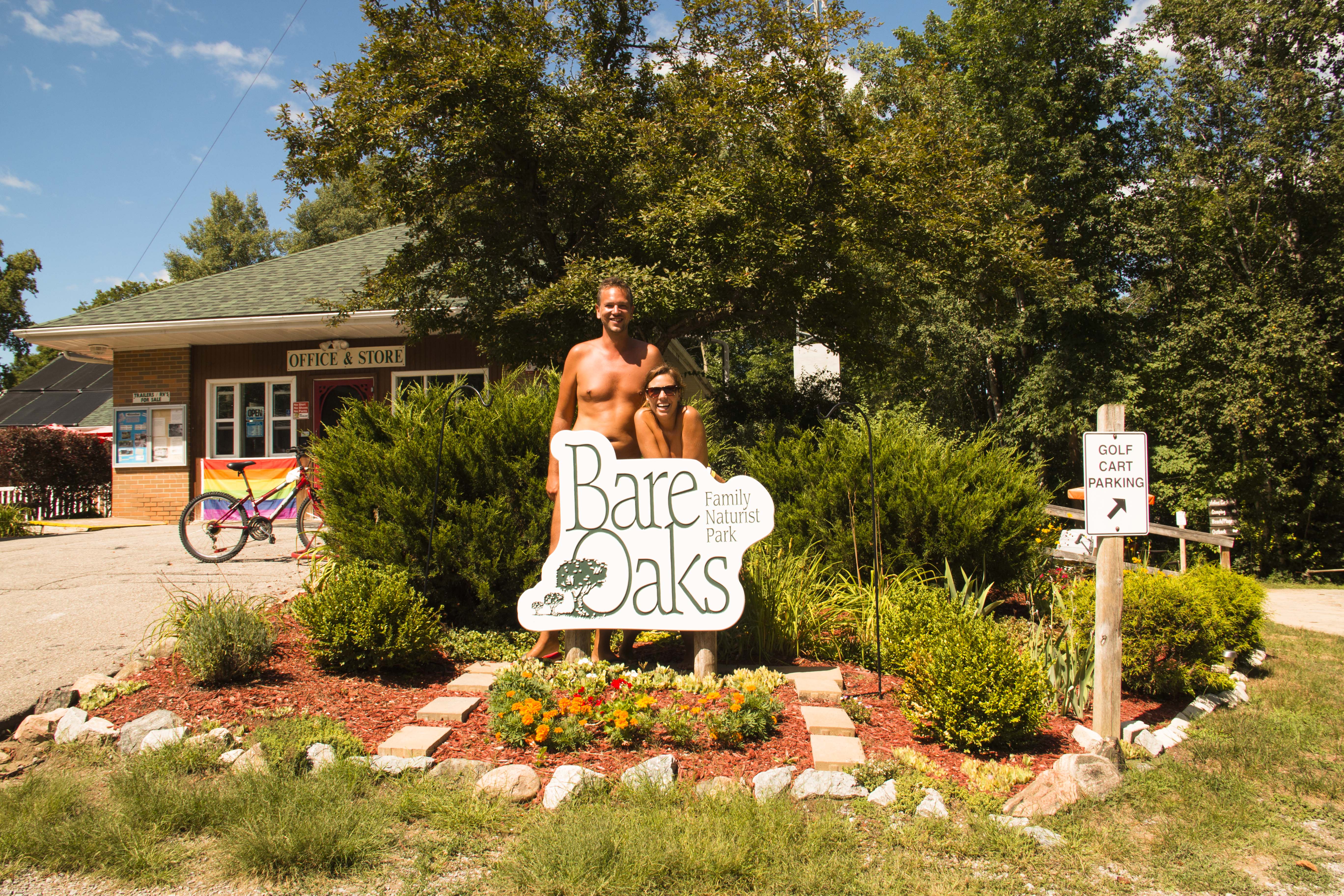
Nick and Lins cite events like naked bike rides and naked festivals as success stories in attracting a younger crowd than “genuine” naturism. Portland’s version of the World Naked Bike Ride (WNBR) just might take the cake as the world’s most popular unclothed cycling jaunt. The event – which originated 14 years ago as a gathering to raise awareness about cycling safety and the use of fossil fuels – has morphed into a carnival-like party that has attracted more than 10,000 riders in recent years.
So, how has a protest against oil dependency come to be viewed as “a bit of a rite of passage for Portlanders” and an event “at the heart of soul of why people enjoy living in Portland”? According to organizer Meghan Sinnott, backing from the media hasn’t hurt. Portland’s WNBR has established a partnership with the Portland Mercury, a prominent weekly newspaper. Sinnott credits eye-catching promotional materials – such as Facebook banners, posters and items sold on site – for giving the ride an air of coolness. Plus, as Sinnott boasts, “We’re not a very prudish city.”
According to Nick and Lins, young people serve as the driving force in naked tourism. “Generation Y is known for questioning old values and habits,” the couple reckons. “And now, that they’ve grown [to become] twenty- and thirty-somethings, they also question the conventional way of living and to an extent, also of traveling.”
A crucial issue organizers of naked tourism products and naked events grapple with is establishing a good relationship with its surrounding community, something that can be challenging but necessary in ensuring the stability of an event or tourism product. In Portland, WNBR event staff attend neighborhood association meetings to answer questions, which Sinnott maintains is not required for obtaining a ride permit but helps put a face to the names of its organizers. She also credits the decision to change the route every year (which is made in order to not keep favoring the same neighborhoods) as a reason why the ride continues to have a good name.
Meanwhile, Shirley Mason believes one crucial step in becoming a valuable member of the community is getting to know elected officials.
“We’ve spent a lot of time having to go up to Tallahassee and other counties fighting anti-nudity legislation. We’ve battled the radical religious right and won several years in a row,” she says. Informing people about the economic clout of Haulover Beach is necessary because “if you don’t know let people know you’re good for the community, you might as well not be there.”
Enforcing the Rules
While South Florida Free Beaches (the organization that administers Haulover Beach) has run numerous events for its local community, the most valuable step Mason and company have taken to make Haulover Beach a comfortable place is for visitors is placing Beach Ambassadors (a term she says is a combination of “a welcome wagon, concierge service and crime watch”) on the premises. After observing what had been successful at other nude beaches, Mason decided to include volunteer beach ambassadors in the business plan. Beach Ambassadors on Haulover hand out literature, welcome visitors and inform beachgoers of proper beach etiquette.
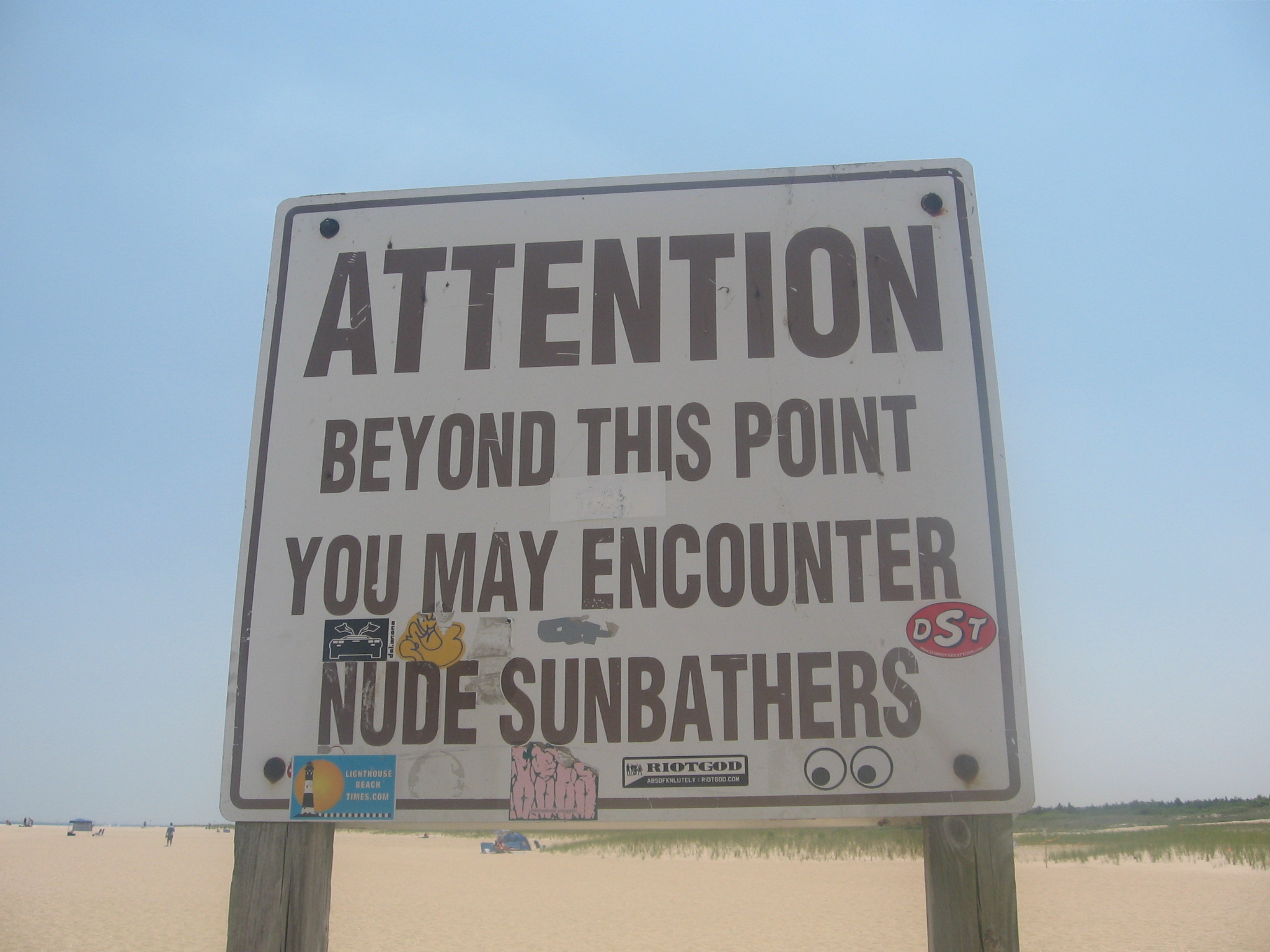
“A beach can get a bad reputation very quickly if you don’t have a group that educates people that come there, insists upon proper beach etiquette and works with the authorities in charge of that beach,” she cautions. “In the past, when you didn’t have an organized mentoring group for a clothing optional beach, it was going to deteriorate into the lower common denominator.”
Beach ambassadors provide an invaluable service. If perverts think they can get away with [lewd behavior],” she warns, “they just attract more perverts. And you just can’t have that.”
Mason explains that because of the unwillingness of many to offend others with nudity, remote locations are often selected for nude beaches, which enables perverts to thrive. She chose Haulover Beach as a site for a clothing-optional beach because it provides numerous amenities such as bathrooms and lifeguards that beachgoers are used to.
“I don’t want to go to some remote place in the backwoods that you to have to schlepp forever to get to that has no amenities,” Mason says.
Bare Oaks is also proactive in fighting any potential lewd acts on its property. “Nobody can 100% ensure [that anything inappropriate won’t happen],” Deschenes admits. “But it is very, very rare because we make it clear what we are about. When people visit for the first time, they must watch an introductory video and provide government-issued photo ID.”
The threat of prompt identification after a misdeed increases the likelihood of better behavior, Deschenes believes. He adds, “Most importantly, we take action on any report of inappropriate behavior. A complaint of a crude comment is enough for us to go and speak with a visitor.”
Nick and Lens have also noticed numerous steps naturist resorts have taken to ensure the safety of their guests. The couple says all resorts emphasize the following major points: (1) no sex in public places (2) respect for each other, and (3) no harassment.
Regarding any acts of misbehavior, the couple states some resorts have adopted “a one-warning system” while other places will expel egregious culprits and ban them for life. Nick and Lins say they’ve been at resorts where the latter case happens and other local naturist resorts have been notified about the incident.
Most importantly, the couple has noticed a communal sense of control at naturist resorts, as well as at nude beaches.
“Naturists take care of each other and notify each other if something would go on,” they note. “For example, if a naturist shows a certain interest in a child, very soon someone will notice and tell the parents or talk to the person themselves.”
Nudity does not mean sex
So what might be the biggest challenge faced by organizers of a naked tourism product? According to Shirley Mason, it’s the belief among many that nudity equates to sex. That’s also a point Deschenes seconds.
“There are so many people who exploit naturism and misuse the term that it’s not surprising that society generally thinks it’s all about sex,” he grumbles. However, Bare Oaks has generally succeeded in overcoming the initial skepticism it faces from many parents.
“We get a lot of couples who first visit without their children in order to determine how it is. They often regret not bringing them when they see all the other kids having fun.” Deschenes adds that oversight is “usually corrected” a week or two later when parents return with their kids.
Possibly to the surprise of many, being naked in public can be relaxing. “It may seem counterintuitive,” Deschenes asserts. “But when everyone is nude, it is much less sexual.”
Mason concurs, stating “people act really civilized in a clothes free environment. And perhaps due to the ease folks often feel in a naturist environment, you get to know people better.”
“Being so open and naked made it easier to be friendlier with people,” writes travel writer Patrice J Williams about her experience vacationing at the Jamaican nudist resort Hedonism. “It’s a bit hard to pass by a naked person and not make eye contact, say hello and possibly spark a new friendship.”
A naked vacation just might represent a new way to enjoy life.
Podcast Episode 12 with Christina Brobby and Mary Ann Thomas 23 Jul 2018 3:00 PM (6 years ago)


Jeff speaks with Mary Ann Thomas and Christina Brobby, two travel writers of color from VONA (Voices of Our Nation’s Arts); we hear some great music by Oisima and The Polyversal Souls.
(Note: Because of the longer than usual interview, no News this podcast.)
Have a Listen!
Resources for the books, organizations & music in Episode 12:
Opening Nicaragua story by Jamilah Malika:
(Jamilah’s website is under construction)
2018 Himalayan Writers Workshop, with Jeff Greenwald & Laurie Wagner:
himalayanwritersworkshop.com/contact
Interviews: Mary Ann Thomas and Christina Brobby, two travel writers
of color from the VONA Workshop:
vonacommunity.org
thejamesfrancoreview.com/2016/05/19/nonfiction-by-christina-brobby
postcardsfrommat.com
ET News: Women travelers and harassment:
ethicaltraveler.org/2018/05/sexual-harassment-and-assault-of-travelers-goes-beyond-white-women-in-developing-nations
For more ET News with Natalie Lefevre, visit
ethicaltraveler.org/posts
Music:
Opening story music (Jamilah Malika): Mmhmm, from Nicaragua Nights, by Oisima
oisima.bandcamp.com
Podcast Theme Music: Energizer, by Stephen Kent, from the album Family Tree
stephenkent.net/#about
Closing track: Sad Nile is by The Polyversal Souls. A Berlin-based band that draws
from several African styles, most notably Ethiopian Jazz. The track is from their 2015 release, Invisible Joy.
thepolyversalsouls.bandcamp.com
Additional music by Jef Stott
jefstott.com
Geo Quiz-zine #12:
Q – In a 2013 interview, the late Anthony Bourdain was asked where he would eat if
he knew he had only 24 hours to live. In what city was his chosen restaurant located?
A – Enter and win Faith Adiele’s Thailand memoir, Meeting Faith
Greening Up Summer Music Festivals 11 Jul 2018 5:22 AM (6 years ago)

Synonymous with summer, music festivals welcome large numbers of live music aficionados making long treks to hear their favorite bands perform – as well as pour lots of money into the coffers of organizers.
Between 1999 and 2009, the North American concert industry saw profits jump by 40% as annual live music revenues increased from $1.5 billion to $4.6 billion. In 2017, Coachella became the first reoccurring music festival to gross more than $100 million. Communities that host such massive shindigs often get a large piece of the pie. In its first year of existence, the Firefly Music Festival in Delaware is projected to have pumped more than $12 million into the local economy.
Reducing waste left behind at festivals
However, music festivals often struggle to be environmentally-friendly. In the U.K., festivals cause 21,800 tons of carbon emissions per year. That figure doesn’t include attendees and artists’ journeys to such events, which could be another four times the above-mentioned number, according to Powerful Thinking, an organization that works with festivals to decrease their environmental footprint. Furthermore, British festivals produce 26,000 tons of waste annually and recycling rates barely exceed 32%.
Many festivals are taking numerous steps to reduce waste left behind. Lyndsey Harvey, the regional Public Relations manager of England’s Larmer Tree Festival, has expressed pride in her event’s recycling efforts.
“The setting at Larmer Tree Gardens is beautiful and we want to keep it that way,” she says. “So we work with our local council to ensure that all recyclable materials are collected and processed at the end of every festival.
“Any material that can’t be recycled is baled for waste energy production so nothing goes to landfill. We also encourage all of our workshop and carnival leaders to use as many recycled materials as possible and after the festival, all unclaimed lost property is donated to charity.”
Another festival experiencing success in increasing its recycling output is Scotland’s HebCeltfest. In 2013, it became one of the first festivals to launch a Recycle and Reward scheme in order to incentivize recycling. While the plan has encountered some difficulties, it has sparked a reduction of waste in landfill, according to one festival staff member.
HebCeltfest has also made further strides in reducing waste. The event has implemented the use of reusable ecocups, a decision the staff member says has been “popular not only with festival goers who appreciate why we implemented them in the first place” as well as the driving force behind the reduction of waste filling the site going to “literally zero overnight.”
Organizers at San Francisco’s Outside Lands Festival have devised another creative method for cutting down waste. Guests who bring their own water bottles to the event are allowed to fill up for free at water stations, which one year prevented more than 50,000 plastic water bottles from littering the ground.
But simply reducing waste isn’t the end goal for Lyndsey Harvey. The Larmer Tree Festival has taken advantage of its partnership with the Trussell Trust to benefit the larger community.
“With the Trussell Trust, we encourage guests to leave all their nonperishable food in special containers, which is then redistributed via Trussell Trust food banks,” Harvey says. “That means we can not only cut down on food waste but also help a fantastic food charity.”
Transportation is also a major environmental concern
The biggest challenge festival organizers face in trying to make their events more sustainable happens away from festival grounds. Transportation to and from the venues generally results in 80% of total emissions for festivals.
Convincing patrons to come via public transport has proven to be challenging for some festival organizers as most festivals are held in rural areas because festivals require immense amounts of space where temporary structures can be constructed easily. The selection of rural areas as festival settings essentially forces attendees to travel by car to such events. Not surprisingly, 66% of festival goers participating in one survey said the car was their preferred method of transportation.
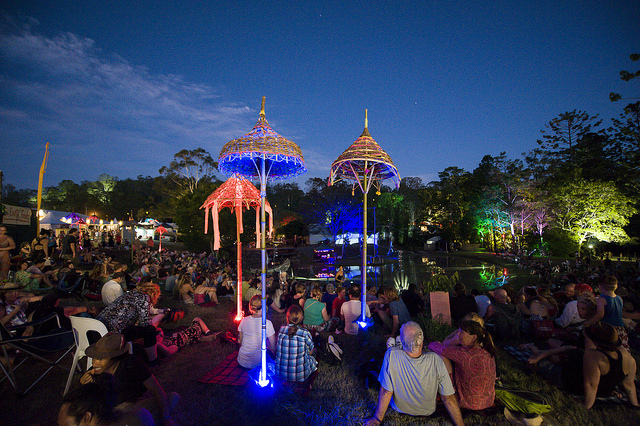
This issue affects festivals worldwide. Woodford Folk Festival is one of Australia’s most popular music festivals, bringing in more than 132,000 attendees each year. Held in the hinterlands of the Sunshine Coast over the end of the year, the lack of public transport over that period presents a significant challenge for organizers. When asked if her festival has been able to turn attendees toward choosing a greener way of arriving on the premises, Woodford Folk Festival business development manager Corrina McGowan says, “Not really.”
“Bringing camping equipment on public transport is not practical,” McGowan adds. “However, our day trippers and more sharing vehicles has been improved but because public transport to our ‘out in the bush’ location is limited, our success generally is not something we can bark about.”
Harvey also laments the lack of public transport options. “Our location is right in the countryside, so public transport options are limited for us,” she says. “However, we have always encouraged our attendees to lift share as much as possible.”
Festival organizers have devised creative ways to reduce the ecological footprint of transportation. Pickathon, a festival held on the outskirts of Portland, Oregon, runs a free bicycle parking lot as well as a shuttle. Approximately 500 bicycles were parked in the lot in 2012 and festival organizers estimate a quarter of attendees used one of the two above-mentioned options. Meanwhile, while patrons at California’s Lightning in a Bottle who choose to drive to the festival solo must fork out $30 for parking (drivers in vehicles with more than one passenger are entitled to free parking), they can purchase carbon credits to offset their trek to the event.
England’s Shambhala Festival is also developing a greener way of transport to the event as an incentive for music lovers to come. According to its sustainability manager Henry Taylor, Shambala subsidizes coaches from several British cities – 20% of the festival’s ticket sales are set aside for coach travel.
“It comes at a cost,” Taylor says. “But we see it as a necessary step to limiting the overall impact of the festival.”
Furthermore, Shambhala has established partnerships with a car-sharing website and a cycling tour group that brings guests from Bristol and London. Organizers have also implemented a tier of ticketing for patrons arriving via bicycle.
Reducing the festival’s footprint
Community involvement can also push a music festival to incorporate more aspects of sustainability. The Woodford Folk Festival is a case in point as the event has invited attendees to “green” up the proceedings as part of its Forest Woodfordia.

“Our patrons sponsor trees and then pay for the privilege of coming back to plant them,” says McGowan of the project that has seen the planting of roughly 110,000 endemic rainforest trees and plants on festival grounds. “This project has had the wonderful outcome of giving ownership to our community, which wasn’t planned.”
The Finger Lakes Grassroots Festival is another event that epouses the tenets of sustainability while supporting its local area.
“The Grassroots Festival embraces the community,” says Josh Chmiel, the event’s Marketing and Media Director. Community support is reflected by the festival’s embrace of locally sourced food, which is featured at an onsite farmer’s market.
“If [local farmers] use the festival to promote their products, they will see a boost in business, including serving patrons traveling from longer distances,” Chmiel says.
Government support has also assisted the festival to reach a desired level of sustainability.
“Tompkins County is doing a lot to help us be solar,” Chmiel adds. Such aid has enabled the Grassroots Festival to benefit from solar powered lights, including a self-powered trailer so patrons can charge their phones.
But the upstate New York event is far from the only gathering to make heavy use of solar power. Norway’s Oyafestivalen features a stage solely powered by solar energy, Portugal’s Boom Festival utilizes four stations, and quite possibly, Iceland’s Secret Solstice takes the cake for the most creative use of solar energy: the event is held in the middle of the summer solstice (the longest day of the year) so wasted energy is limited.
Finally, food represents an avenue for festivals to reduce their carbon footprint. Henry Taylor states his festival’s decision to go meat-free as a boon to the event.
“The feedback after the first meat-free Shambala was overwhelmingly positive,” he says. “I think this was due to the amazing selection of different food choices on site, and very high food standards held by our traders.”
Not only are Shambhala Festival’s patrons treated to delicious vegan and vegetarian options, they have the opportunity to be educated about what they are consuming.
“We keep the good conversation alive across the site and host discussion at our venue ‘Garden of Feeden’, where guests can attend talks and workshops focused on all things: industry, waste, farming, ethics as well as communal cookery and baking workshops,” Taylor adds.
So what can you do to help?
Fortunately, there are some steps festivalgoers can take to green up their experience. First, don’t abandon your tent at the end of the spectacle as many of them end up in landfills (More than 5,000 tents were left on the premises after the Glastonbury Festival in 2016).Two years prior, camping equipment comprised a large portion of the 596 tons of waste from the Reading Festival that went to the landfills. Second, arrive with a refillable water bottle as many festivals provide free water. Finally, bringing reusable containers (for food) and utensils serve as an excellent way of cutting down on waste (as well as shunning straws). Food waste represents the world’s third largest contributor to greenhouse gas emissions as when discarded food rots in a landfall, it emits methane, a powerful greenhouse gas.
This Land Is Your Land. US National Parks Under Threat 28 May 2018 4:35 AM (6 years ago)
“National parks are the best idea we ever had,” wrote author and environmentalist Wallace Stegner in 1983. “Absolutely American, absolutely democratic, they reflect us at our best rather than our worst.”
Stegner echoes the view of President Franklin D. Roosevelt nearly fifty years earlier when he pronounced, “There is nothing so American as our national parks. The fundamental idea behind the parks is that the country belongs to the people, that it is in process of making for the enrichment of the lives of all of us.”
But today, these places of national pride and cultural heritage that belong “to the people” are under serious attack, encroached upon by private industries anxious to log, drill, and mine, and encouraged by a presidential administration that disdains hallowed grounds and promotes profit over preservation. In short, it’s been a brutal year for public lands.
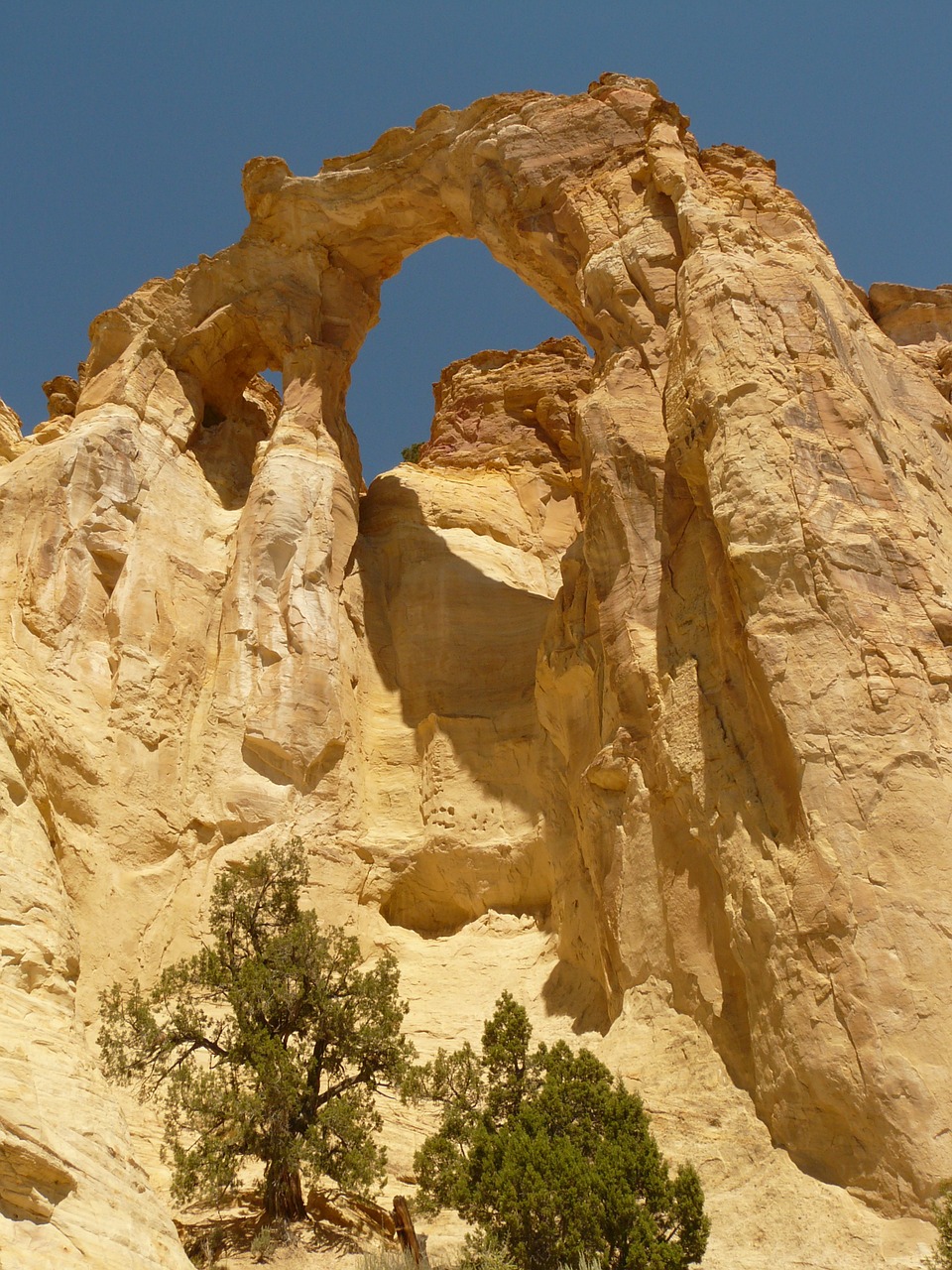
Since President Donald Trump took office in January 2017, his administration “has made more than 30 dangerous and destructive decisions about America’s public lands,” according to the National Parks Conservation Association. These egregious actions include repealing the Clean Water Rule, which protects streams, wetlands, and other waterways essential to the health of parks and communities; ordering the Environmental Protection Agency (EPA) to withdraw and rewrite rules mandating power plants to limit carbon dioxide; directing federal agencies “to no longer consider the effects of climate change when deciding whether to issue permits for fossil fuel production”; proposing a groundwater mining project that would pump 16 billion gallons of water yearly from the Mojave Desert, affecting the Mojave National Preserve and Mojave Trails National Monument; calling on the Department of the Interior (DOI) to grant energy developers access to areas previously closed to offshore oil and gas drilling, thus threatening coastal parks and marine wildlife; opening the door to uranium mining in lands around the Grand Canyon; and eviscerating protections of more than two million acres of national monument land at Bears Ears and Grand Staircase-Escalante National Monuments.
And that’s just for starters.
Nearly three dozen other steps have undermined, degraded, and outright attacked laws protecting public lands and their managing agencies, further jeopardizing the undoing of America’s national parks. Moreover, Trump’s proposed 2019 budget includes a drastic 16 percent cut to the DOI, which houses the National Park Service, as well as cuts to the park service itself and to the EPA. Additionally, the budget recommends extreme staffing cuts of nearly 2,000 National Park Service rangers at a time when park tourism is at an all-time high, having drawn nearly 331 million visitors in 2017.
“The president’s budget proposal once again demonstrates that the administration is actively working to undermine our national parks and the environment on which they depend,” said John Garder, Senior Director of Budget and Appropriations for the National Parks Conservation Association. “Choking off funding for staff who protect our national parks puts our country’s natural, cultural, and historical heritage at risk.”
The Exodus
A stunning response to the Trump Administration’s arrant indifference to environmental concerns occurred in January, 2018, when nearly all the members of the National Park System Advisory Board abruptly resigned, leaving the federal government without a functioning body to designate national historic or natural landmarks. This panel, authorized in 1935 under the Historic Sites, Buildings, and Antiquities Act, comprises citizens “chartered by Congress to help the National Park Service care for special places saved by the American people so that all may experience our heritage.” Members were frustrated over Interior Secretary Ryan Zinke‘s failure to convene a meeting since Trump took office, although the Board is mandated to meet twice a year, or even to nominate a director for the park system. The political publication The Hill noted the misguided policies of the Trump administration that prompted the resignations: “The fact that these experts, who care deeply about our national parks, would resign en masse in frustration points to the disfunction [sic] and the disrespect this administration has shown our nation’s parks and public lands,” wrote Jamie Williams.
One Board member, former Alaska governor Tony Knowles, lamented that the DOI “showed no interest in learning about or continuing to use the forward-thinking agenda of science, the effect of climate change, protections of the ecosystem, [or] education.” Carolyn Radelet, chief executive of Project Concern International, expressed in her resignation letter her “profound concern that the mission of stewardship, protection, and advancement of our National Parks has been set aside,” adding the hope “that future actions of the Department of Interior demonstrate that this is not the case.”
According to Phil Francis, Chair of The Coalition to Protect America’s National Parks, “This discourteous and disrespectful treatment of the board is inexcusable and, unfortunately, consistent with a decidedly anti-park pattern demonstrated by Secretary Zinke’s department. We keep waiting for a pro-park agenda to emerge, but we are now convinced we are waiting in vain.” Writing in Scientific American, Dana Hunter agrees: “The longer this administration drags on, the more endangered our public lands become. We may never be able to repair some of the damage—especially not if Trump’s Secretary of the Interior, Ryan Zinke, has his way.”
Ironically, the epigraph on Zinke’s government home page reads, “Without question, our public lands are America’s treasure.”
Fighting Back
No president has ever attempted to eliminate an existing national monument, and legal scholars now argue that the president lacks the authority to demolish or significantly alter a monument. Half a dozen lawsuits have already been filed on behalf of Bear’s Ears and Grand Staircase-Escalante, the most prominent victims of Trump’s flagrant behavior, which calls to slash nearly half of Grand Staircase and to gut the 1.3 million Bears Ears preserve by 85 percent, reducing it to just over 200,000 acres.
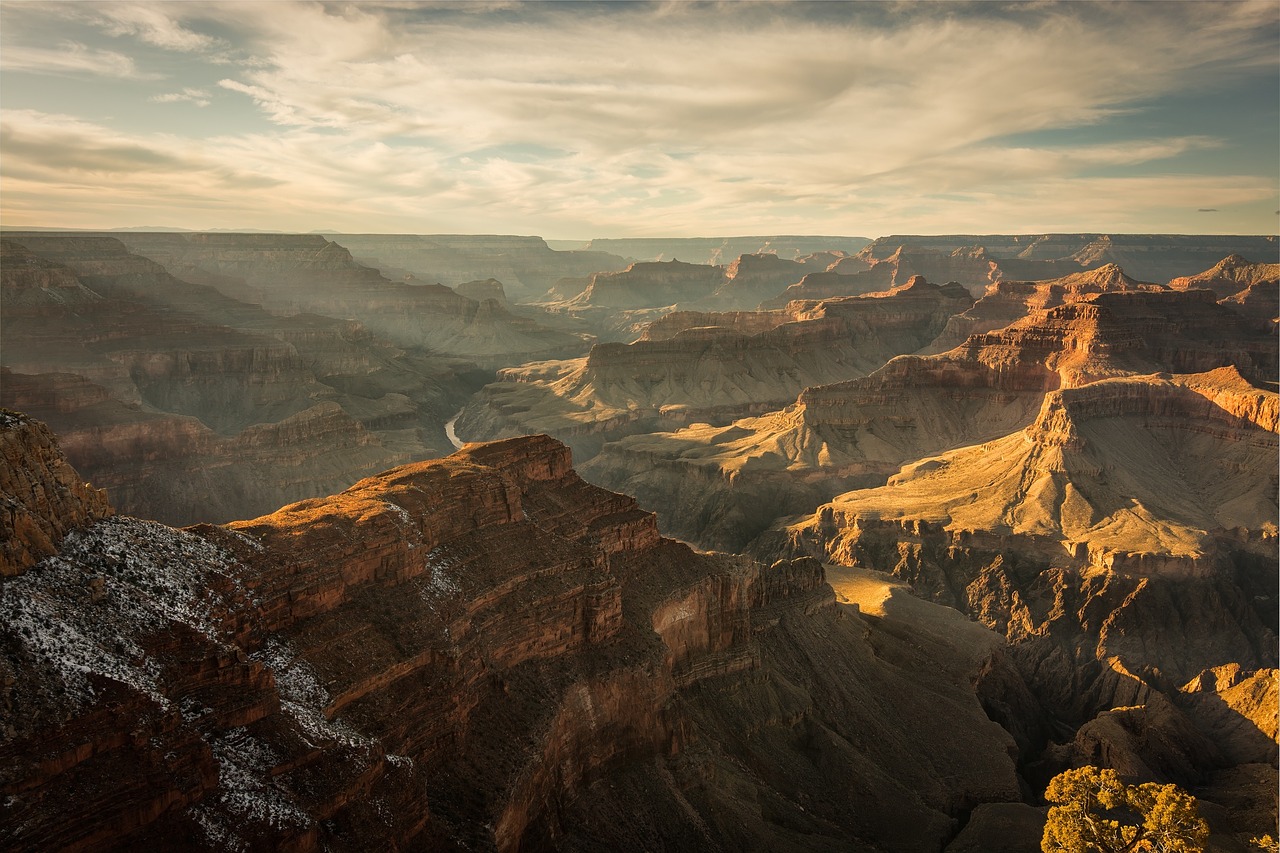
The lawsuits have been brought by several American Indian tribes, a dozen conservation and environmental groups including The Wilderness Society and the Sierra Club, the Grand Staircase Escalante Partners, the Society of Vertebrate Paleontology, and others. The primary basis for litigation is the American Antiquities Act of 1906, which “obligates federal agencies managing public lands “to preserve for present and future generations the historic, scientific, commemorative, and cultural values of the archaeological and historic sites and structures”; it also “authorizes the President to protect landmarks, structures, and objects of historic or scientific interest by designating them as National Monuments,” but it provides no language granting presidents the power to rescind or cut them.
The outcome of these legal challenges is crucial: a victory would affirm the rights of future presidents to “use the Antiquities Act to extend protection to large areas of public land and cement the monuments’ current boundaries,” but a defeat could allow “Trump and future presidents [to] drastically shrink any of the dozens of monuments created by their predecessors, opening the formerly protected terrain for all kinds of development.”
What Can One Person Do?
While this ignominious David and Goliath challenge may seem daunting, conservation, environmental, and other groups have launched their thousand ships to win the battle. Individuals also have many opportunities to help protect our lands and heritage against these would-be despots. The National Parks Conservation Association offers many options for advocacy. Among them are the following: 1) participate in any of the numerous preservation organizations; 2) take action through marches, rallies, or other events, and attend hearings or town hall meetings; 3) volunteer to help with the shrinking park guidance due to government cutbacks; 4) write, call, or email your government representatives, urging them to protect our lands; better yet, try to set up an in-person meeting in a district office; 5) write op-ed letters to local and national newspapers; 6) above all, vote. To borrow a quotation attributed to many, “The only thing necessary for the triumph of evil is that good men do nothing.”
Let Us Remember
The national parks, notes National Geographic, have been woven into the fabric of American life for so many generations that it’s hard to imagine the nation without them. They were born through the vision of a small group in the mid-1800s to ensure that America’s greatest national treasures belong to all people and remain forever preserved. In 1872, President Ulysses S. Grant made Yellowstone America’s first truly national park. Under President Theodore Roosevelt, one of the park system’s greatest advocates, five new parks were created, as well as 18 national monuments, four national game refuges, 51 bird sanctuaries, and over 100 million acres of national forest. In 1915, millionaire Stephen Mather crusaded for an organization dedicated to preservation, leading to the creation of the National Park Service in 1916, signed into law by President Woodrow Wilson and sparking the growth of today’s nearly 400 monuments, battlefields, seashores, recreation areas, and other lands. But now, as Aaron Weiss, Media Director at the Center for Western Priorities, points out, President Trump’s executive orders against our beloved lands signal “the start of an all-out assault on America’s national monuments and Teddy Roosevelt’s conservation legacy.”
The legacy entrusted to the National Park Service doesn’t belong to one party or the other, much less to Trump or to his movement. It belongs to all the American people. So as the president, Zinke, and a listless Congress strive to tear apart our national parks, Americans must take up their proverbial arms to defend against this tyrannical, self-serving onslaught. Let us remember the simple yet eloquent words of the quintessential American Woody Guthrie: “This land was made for you and me.”
